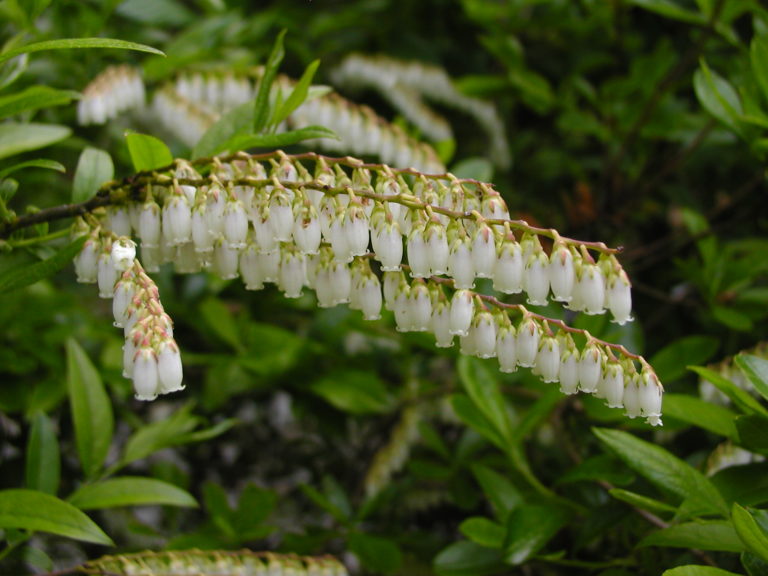Sweetbells Leucothoe is a handsome, deciduous, colony-forming, understory shrub which is naturally found in the Coastal Plain and Piedmont swamps, bogs and wetlands of Southeastern states. It can be cultivated easily in upland sites as well, reaching up to ten feet tall in consistently moist and shady locations. Arching, mostly unbranched stems bear bright green, finely serrated leaves and long racemes of delicate, fragrant, urn-shaped flowers. The foliage assumes beautiful red, orange and purple color in fall, unusual for a shady shrub. Although colonial, it is not aggressive and adds a pleasing form and texture to a woodland landscape.
NURSERY HOURS
Wednesday: 10-4 Thursday: 10-6 Friday-Saturday: 10-4 Sunday: 12-4
Eubotrys racemosus

Key Info
Scientific Name: Eubotrys racemosus (L.) Nutt.
Common Names: Coastal Fetterbush, Swamp Dog-laurel, Fetter-bush, Leucothoe, Sweetbells Leucothoe, Sweet Bells, Swamp Doghobble, Swamp Sweetbells
Family Names: Ericaceae (Heath Family)
Plant Type: Tree / Shrub
Leaf Retention: Semi-evergreen
Flower Color: White
Special Characteristics: Rhizomatous, Tolerates shade, Reported to be deer resistant., Good wildlife cover/habitat, Good fall color, Fragrant flowers, Tolerates wet conditions
Additional Info
Habit: Multi-stemmed, thicket-forming shrub with arching, often zig-zag branches.
Height: estimates vary from 6' to 12'
Spread: 8'
Soil Conditions: Wet, acid, organic sandy, loam, clay
Leaves: Alternate, simple, waxy leaves 1" - 3" long, with finely serrated margins and pointed tip, bright green and shiny above, paler below; turn bright red and purple in the fall/winter.
Flowers (or reproductive structures: Long racemes of drooping, white-pink, 1/4-1/2-inch, bell-shaped, fragrant flowers arising from end of the previous year's growth in spring.
Fruit: Flowers develop into dry capsules hanging in one-sided rows 5-7" long; mature in early fall.
Natural Distribution: Blackwater banks, cypress depressions, wet pine flatwoods, bogs and pocosins, mostly on coastal plain.
USDA Hardiness Zone: 5 to 9
USDA Wetland Indicator Status in NC: FACW
Pollination: Bees, butterflies, other insects
Wildlife Connections: Attracts both bees and butterflies; thickets provide excellent cover for many small animals.
Propagation: From seed or from root cuttings.
